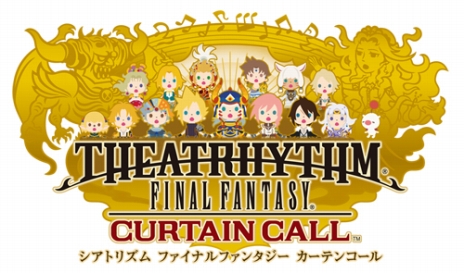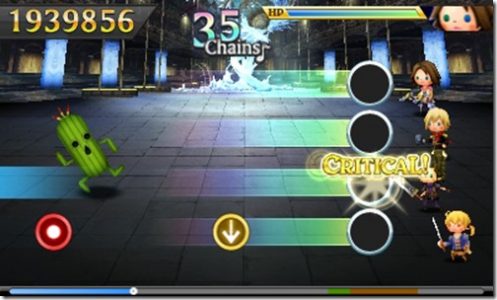Back when Final Fantasy Theatrhythm was first announced it was an interesting concept. Taiko no Tatsujin, among other games, proved that a rhythm based RPG game could work and considering the popularity of the music found in the Final Fantasy series, not to mention the vast array of memorable characters/enemies, there was enough content to make it feasible, but that doesn’t always spell success. Thankfully Final Fantasy Theatrhythm was a hit, largely due to the game maliciously staying true to both the rhythm genre and what you would expect from a Final Fantasy title. Following the success of the original we have the sequel Curtain Call, which changes a lot and adds a bit of content, but will it see the same success as Theatrhythm or was the original a fluke?
From the moment you start playing Final Fantasy Theatrhythm Curtain Call, you can tell it’s a better game. For starters, the track list is so much larger than the original that you probably start with more songs than the original ever had. Better yet, many of these songs come from games not found in the previous version, such as Lightning Returns, making the new content feel like more than filler.
In addition to adding a number of songs, Curtain Call also expands on the basic concept. As with the original, there are three basic style stages. The first is just doing the basic inputs like tap, hold and tap plus direction with a cutscene going in the background. These stages can be difficult because the indicator is moving around and the scene in the background might distract you, but beyond that they’re pretty straightforward. The next type is movement stages, which has your character walking with a backdrop related to whatever song is playing. These stages play the same as the aforementioned stages, just with the exception that you have to move the indicator during holds and at a specific part you can get a chocobo for a brief period. The final type is battle, which is the meat of the game.
During a battle stage, you and your party will go up against enemies from previous Final Fantasy games. These range from basic monsters, to fan favorites like Tonberry, to characters/final bosses from previous games. Each enemy will have a finite amount of health that you need to deplete by pushing the correct inputs. Based off how well you time your attacks, you might do more damage and missing/messing up will allow the enemy to attack you. After defeating an enemy you might get an item and another enemy will take its place. Similar to the running stages, every stage has a part where you can perform a summon. However, if you screw this section up, instead of getting a good summon, you’ll be rewarded with a chocobo.
After a stage, you’ll be rewarded with some experience points towards unlocks and items. Experience points will level your party members and unlock new skills for them to use. These come in two different types called reactive and proactive. The first set of skills happen once you meet some sort of condition. Some of them are simple, like automatically attack when the second enemy appears, whereas others are more conditional like getting three misses gives an attack up to five times a stage. The other set modifies things, such as luck or agility without the need to do something specific on a stage. These skills will help you defeat enemies and earn more items, so it’s important to check them often.



